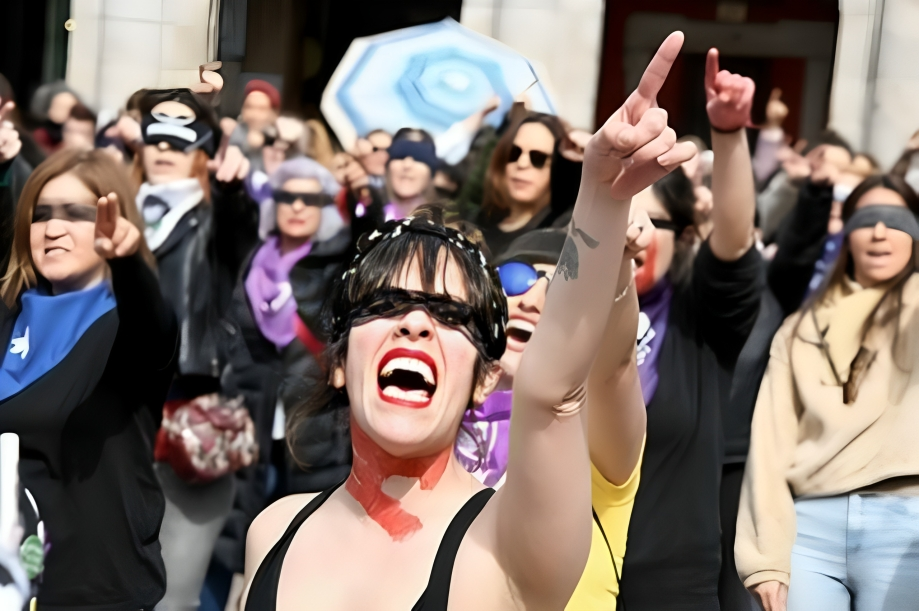Each year, as International Women’s Day (IWD) approaches, lifestyle brands worldwide tailor their marketing strategies to appeal to women and their perceived needs. Bangladesh is no exception. Last year, a prominent soap brand launched a widely publicised Women’s Day campaign featuring models, bloggers, and female entrepreneurs. While visually appealing and professionally executed, the campaign ironically lacked the core essence of feminism.
Table of Contents
The Commodification of Feminism in Modern Marketing
The women showcased were conventionally attractive, fair-skinned, and adorned in glamorous, impractical attire. They exuded an image of grace and passivity, never engaging in physical labour or voicing strong opinions. As the video unfolded, it became evident that their presence was primarily to serve corporate interests rather than advocate for genuine gender equality.
So, is this what we are celebrating? Has the feminist movement been reduced to a commercial tool for profit?

A Historical Perspective on Feminism
The feminist movement has undergone several transformations since its inception, evolving through distinct waves, each addressing specific challenges and expanding the discourse on gender equality.
First Wave Feminism: The Fight for Legal Rights
The roots of feminist ideology can be traced back to the 15th century, with early thinkers such as Christine de Pizan, followed by notable advocates like Mary Wollstonecraft and Marie de Gournay. However, the organised feminist movement gained momentum in the mid-19th century with the women’s suffrage movement.
Women took to the streets, demanding the right to vote, own property, and pursue professional careers. Key figures such as Dorothy Day, Sojourner Truth, Jane Addams, and Elizabeth Blackwell led these efforts. However, this early wave of feminism primarily represented white, middle-class women, excluding voices from marginalised communities.
Second Wave Feminism: Expanding the Agenda
The publication of The Feminine Mystique by Betty Friedan in the 1960s marked a turning point, challenging patriarchal notions of femininity and domesticity. This wave saw increased participation from women of colour, with activists like bell hooks and Audre Lorde reshaping the movement.
Two distinct branches emerged: liberal feminism, which focused on legislative reforms to promote workplace equality, led by figures such as Gloria Steinem and Betty Friedan; and radical feminism, which directly confronted patriarchal structures, championed by activists like Casey Hayden and Mary King.
This period also brought attention to issues such as domestic violence, sexual harassment, and reproductive rights.
Third Wave Feminism: The Rise of Intersectionality
By the 1990s, feminism had gained global traction, largely due to initiatives by the United Nations. The Economic and Social Council (ECOSOC) played a significant role in advocating for women’s empowerment worldwide.
Rebecca Walker, a pivotal figure of this era, introduced the concept of intersectionality, acknowledging the diverse experiences of women based on race, sexuality, religion, and socioeconomic background. This period also saw the emergence of transfeminism and postmodern feminism, broadening the movement’s inclusivity.
Issues such as sexual liberation, violence against women, and reproductive autonomy were at the forefront. The punk subculture, particularly through riot grrrl movements, promoted self-reliance and defiance against societal constraints.
Fourth Wave Feminism: The Digital Age and Activism
The 2010s saw the advent of digital feminism, with social media becoming a powerful tool for advocacy. The HeForShe campaign, championed by actress Emma Watson, and the #MeToo movement, which exposed widespread sexual harassment, are defining moments of this wave.
Social media platforms have given marginalised groups a voice, amplifying issues that were previously ignored. However, the accessibility of feminism online has also led to its commodification, where brands exploit feminist ideals for commercial gain.
The Evolution of International Women’s Day
IWD was first declared by the Socialist Party of America during the First Wave of feminism and gained international recognition through the efforts of Clara Zetkin. In the 1970s, the United Nations formally acknowledged IWD, integrating it into global observances.
Historically, IWD has been a day to celebrate women’s achievements in education, employment, and activism. However, in recent years, it has increasingly become a marketing spectacle rather than a genuine tribute to gender equality.
Bangladesh’s Approach to Feminism and IWD
As a predominantly conservative society, Bangladesh is still grappling with the foundational aspects of feminism. While progress has been made in areas such as women’s education and workforce participation, the country remains largely uninformed about intersectionality.
The IWD campaigns in Bangladesh often highlight privileged women while neglecting the struggles of marginalised groups, including trans women, domestic workers, garment factory employees, and sex workers. The movement’s core principle—equality for all—becomes diluted when only a select few are acknowledged.
Where Do We Go from Here?
To honour the true spirit of feminism, future IWD campaigns must embrace diversity and inclusivity. It is crucial to celebrate the contributions of women from all backgrounds, ensuring that feminism remains a movement for collective empowerment rather than a seasonal marketing trend.
Know more:
